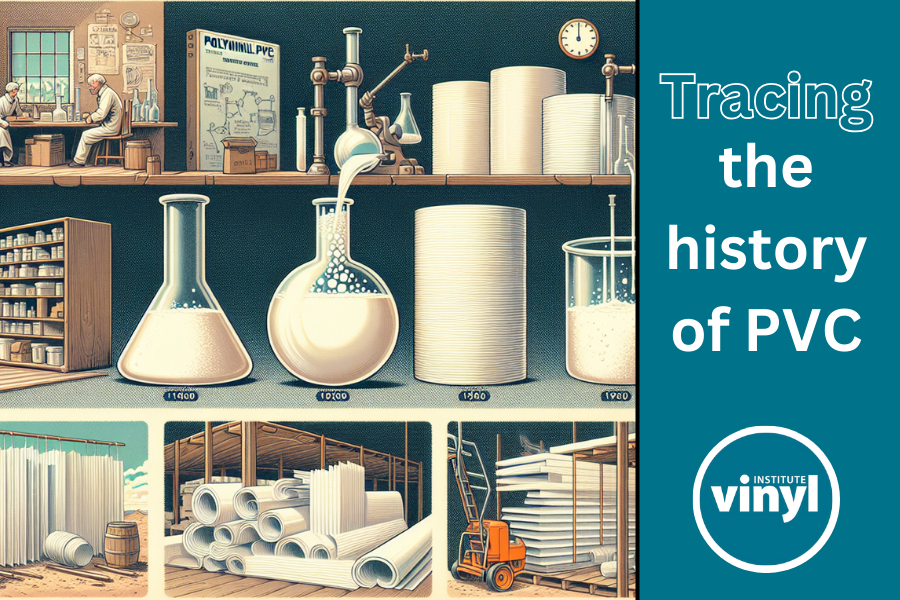This website uses cookies so that we can provide you with the best user experience possible. Cookie information is stored in your browser and performs functions such as recognising you when you return to our website and helping our team to understand which sections of the website you find most interesting and useful.
News
The Evolution of PVC: From Discovery to Modern Applications
Polyvinyl chloride (PVC) was discovered in 1872 by German chemist Eugen Baumann. It was initially overlooked in favor of more versatile materials. However, thanks to industrial advancements, the advent of the 20th century brought a new era for this polymer.
PVC was first synthesized as a white powder, but its commercial potential was not realized until the early 1900s. The breakthrough came when manufacturers began plasticizing PVC, making it more flexible and easier to process. This transformation allowed for a wider array of applications, leading to its first major use in producing plumbing pipes. By the 1930s, PVC began to replace traditional materials like metal and wood in various industries.
The Mid-20th Century Boom
The post-World War II era saw explosive growth in PVC usage. As economies recovered and consumer demand surged, PVC entered homes and industries. It became a staple in construction, used for everything from siding and windows to flooring and roofing materials. Its resilience and low maintenance requirements made it an attractive choice for builders and homeowners.
In addition to construction, PVC began to gain traction in the automotive and electrical industries. The ability to produce PVC in various colors and finishes allowed for a greater range of applications, including insulation for wiring and components for vehicle interiors. PVC also emerged as a material within the fashion world, with vinyl clothing and accessories capturing the imagination of consumers.
Innovations and Diversification
The late 20th century marked a period of significant innovation in PVC production and application. Advances in processing techniques and formulation allowed for developing different PVC grades, each tailored for specific uses. Rigid PVC became the material of choice for pipes, while flexible PVC found its niche in products like upholstery, medical tubing, and toys.
The Modern Era
Today, PVC is an integral part of numerous industries, including construction, healthcare, automotive, and consumer goods. Its versatility continues to expand, with applications ranging from solar panel components to medical devices to continued usage in water pipes.
Today and going forward, sustainability has become a focal point for the PVC industry. Initiatives aimed at improving recycling rates and utilizing recycled content within products, reducing additives, and developing more environmentally friendly production methods are gaining traction. The industry has invested heavily in these areas, including the VIABILITY recycling grant program, designed to increase post-consumer vinyl recycling and promote the usage of recycled content. The Vinyl Sustainability Council has also done great work convening the whole industry, from resin producers to product manufacturers, and discussing ways to embrace sustainability.
The future of the vinyl industry and vinyl products is one that continues to deliver clean water to communities around the world, provide long-lasting materials for the building and construction industry, and protect our healthcare workers and patients.


